This is a DJ mix album which was compiled and mixed by Oe as under the moniker of Captain Funk.
Contents
Tracklist
01. Captain Funk – Twist & Shout
02. Freestylers Featuring Navigator – Warning (Soul Hooligan Remix)
03. Shy Fx – Funksta
04. The Untouchables – Wild West
05. The Wiseguys – Start The Commotion
06. Terrorvision – Tequila (Mint Royale Chaser)
07. Future Sound Of London – We Have Explosive (Imantronik Plastik Formular #1)
08. Zeb.Roc.Ski & Stieber Twins Feat. DJ Busy – B.Boys Revenge (Z.R.S. Rmx)
09. Pizzicato Five – Lesson 3003 Part 1
10. Freddy Fresh – Chupacabbra (Bassbin Twins Remix)
11. Tzant – Bounce With The Massive
12. Mantronik Vs EPMD – Strictly Business
13. Groovy 69 – Music…
14. Juliet Roberts – Bad Girls (Funk Force Supadub)
15. Captain Funk – O.Y.M. (Christopher Just Mix)
16. Hell – Copa
17. Jt Playaz – Let’s Get Down (Olav Basoski’s Samplitude Mix)
18. Untidy DJ’s – Untidy Dubs Presents Funky Groove (Rhythm Masters Sub Club Mix)
19. Elite Force – Call It Brisco (Revenge Of The Breakbeat)
20. Captain Funk – Bustin’ Loose
21. Bentley Rhythm Ace – On Her Majesty’s Secret Whistle
22. Agent Sumo – Mayhem
23. DJ Scissorkicks – Because I Like Disco
24. The Chemical Brothers – Elektrobank (Dust Brothers Remix)
25. Co-Fusion – Wilbee Wilbee
26. Propellerheads – Spybreak!
27. Grooveyard – Watch Me Now
28. Soul Hooligan – Ride the Pony
29. Captain Funk – Kung-Fu Ska
30. Rocketeer – Zappiness
31. Mad Doctor X – Real Heavy Science (Freestylers Remix)
32. Psychedelia Smith – Different Strokes
33. Lion Rock – Rude Boy Rock (Justin Robertson)
34. Madness – One Step Beyond
35. Flabby – Diggy Doggy Doo (Orchestra Version)
Label: Toshiba EMI
Catalog No: TOCP-64015
Release Date: Apr 28, 1999
Commentary
As this was released via a major distribution and a pretty big hit as a DJ mix CD, many people in Japan still might associate the style of early Captain Funk with this release. Like what I aimed at my regular party “Machinegun” at that time, I created this mix CD so that you would be able to enjoy a diverse range of dance music without being pigeonholed or falling into a narrow formalism/sectionalism.
Thanks to the excellent negotiation skill of the A&R director in charge of this release as well as Toshiba EMI’s enormous catalog and international network, I was able to include these famous hits and top-notch dance tracks from across the globe. In the beginning, I picked more than twice as many records as what was eventually included in the album. The director would contact labels of each track all day and night to ask for permission to use it. Every time I received feedback from him, I would review and update the track list by replacing unavailable tracks with alternative ones. I remember it took almost a couple of months to get these final thirty-five tracks selected.
Until this release, I didn’t fully understand how different choosing tracks for your DJ performance at clubs and choosing tracks for compilations for sale/distribution were. To make the latter happen, a considerable amount of human, political, and financial resources are the essentials. Thankfully, I learned a lot about the practical side of the music business through this project.
When it comes to the recording, I did it at the studio in Shibuya which I would attend later for the production of “Songs of the Siren” for almost a year. Bringing dozens of vinyl records and a couple of CDs, I mixed and live-recorded these tracks with Pro Tools. We adjusted the total length to make sure it was within 74 minutes. I think you could do all of this with PC & software now even without mixing the tracks yourself, though.
Let’s talk about the concept. From the beginning, we intended to take a different approach from any other existing DJ mix album. Firstly we wouldn’t make this CD something like a “live-recording from a nightclub.” Generally speaking, almost every mix album would always, while it kicks in with an interesting or colorful beginning, lose its momentum in the middle and take you to a dull moment for a while. If you are immersing yourself in the music on the dancefloor or a dance music enthusiast (or snob), the “slump” time may work as a time of indulgence/addiction or cool-down. But for those who are not familiar with clubbing or when you listen to each track carefully at home, it could only make you skip the tracks.
Not to leave the beginners behind, and to have the audience enjoy the CD like a radio program or an ordinary studio album (not like a “live-from-the-floor”), the director and I aimed at creating something like a “medley album” or “megamix album” rather than a traditional DJ mix album. I can’t believe almost twenty years have passed since we discussed how we could introduce dance music to the general Japanese audience effectively and comprehensively.



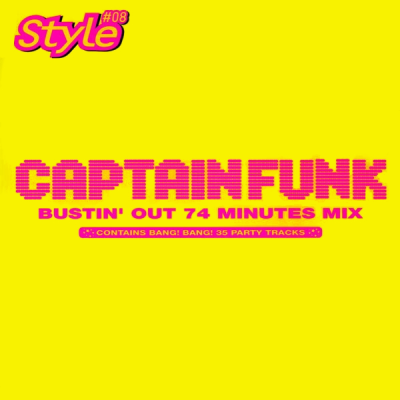
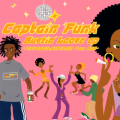
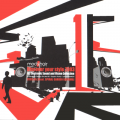
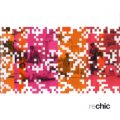
![[Playlist] Swagger, Badass, and Gritty Music](https://www.tatsuyaoe.com/discography/wp-content/uploads/2021/12/Swaggr-Badass-and-Gritty-Music.jpg)

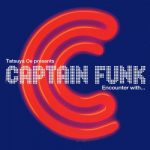
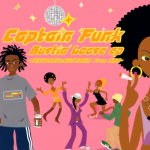
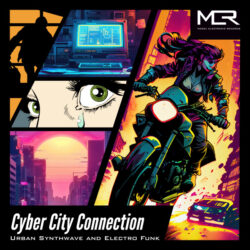



![[Lyrics] Captain Funk - Weekend (kissing, touching, tasting, loving) [Lyrics] Captain Funk - Weekend (kissing, touching, tasting, loving)](https://www.tatsuyaoe.com/discography/wp-content/uploads/2014/09/Captain-Funk-Sunshine-480x480.jpg)